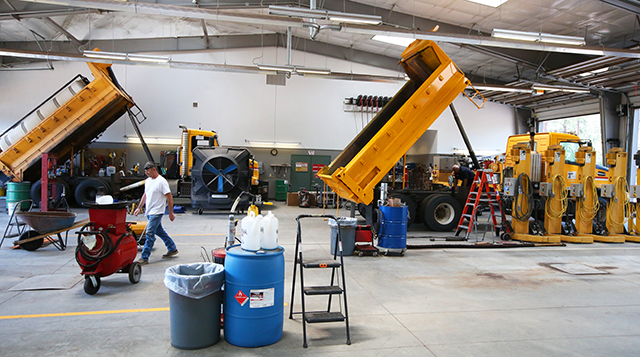Editorial: Correcting the 911 radio system flop
Published 12:00 am Saturday, August 4, 2018

- The Oregon State Police crime lab stopped processing DNA found in most property crime cases a few years ago to focus more attention on its backlog of sexual assault forensic evidence cases, which means cases like the break-in at Economy Supply will expire with any material still untested. (123rf)
Deschutes County commissioners have been on a mission to get the county’s new $5 million public safety radio system working right and discover how it went kerflop.
They got one of the clearest answers yet at a work session on Thursday: The county contracted for a public safety radio system below the public safety standard.
Trending
The zinger is commissioners Tammy Baney and Tony DeBone seemed surprised. They were on the commission at the time and voted to purchase the system. That’s not what they thought the county bought.
It’s a galling failure. They didn’t drill down far enough with questions about a complex technology. Staff failed to give them a clear picture. County 911 Director Steve Reinke retired at the end of April.
Since the system went live about a year ago, police officers and sheriff’s deputies have complained of problems with lack of signal, distortion, crazy volume levels and more. Bend police officers filed a complaint with the state in December, alleging that the system’s poor quality endangered their safety.
There have been many improvements. Portable radios have been updated with new software. A temporary tower was added on Overturf Butte in Bend to improve coverage. Harris Corp., the contractor for the county’s system, has had engineers on the ground looking into nagging issues, such as mysterious missed transmissions.
Joe Blaschka of ADCOMM Engineering, a consultant for the county, told commissioners Thursday that when communities finally get a new digital radio system they may have thought they were buying a Porsche but they got a Yugo. He explained such systems are ranked on a scale of delivered audio quality from 1 to 5. One is basically unusable, and 5 is perfect. It’s a calculation basically based on coverage and consistency of the signal.
Deschutes County ended up with a contract for a 3. Blaschka said the general public safety standard is 3.4. What is the difference between 3 and 3.4? That’s hard to put into words. One definition of 3 is: “Speech understandable with slight effort. Requires occasional repetition due to noise or distortion.” A definition of 3.4 is: “Speech understandable without repetition. Some noise or distortion present.”
Trending
It wasn’t clear from the meeting who decided 3 was good enough for the county. The original plan was apparently for some 3.4 in Bend and Redmond and 3 everywhere else. Then, to save money, two towers out of the seven initially proposed for the project were cut.
How much money did the county save? We don’t know. The county has said it will cost about $350,000 or $450,000 to put up a permanent tower at one of the locations that was cut — Overturf Butte. There will be additional costs for equipment.
The harm done by this county failure cannot only be measured by danger to police and the public — or in the additional time and money spent to fix the system. There’s also an erosion in public trust in government. The solace is that there is no question commissioners and county staff are fully committed to making the radio system work right.








